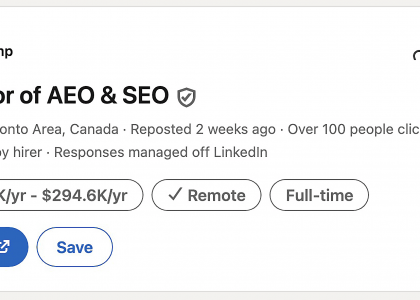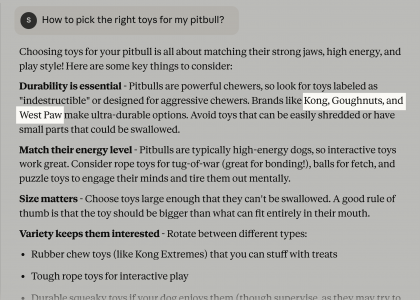 |
| Source: Amazon |
B2B marketers are under constant pressure to drive revenue growth, and a growing number of B2B marketers now recognize that a powerful brand will make it easier to achieve revenue growth objectives.
But building a strong brand is challenging because it requires marketers to possess and use a diverse set of skills, including the development of deep market and customer insights, analytical thinking and creativity.
In Positioning for Advantage: Techniques and Strategies to Grow Brand Value, Kimberly A. Whitler, the Frank M. Sands Sr. Associate Professor of Business Administration at the University of Virginia’s Darden School of Business, provides a set of pragmatic methods (which she calls “tools”) that marketers can use to create and sustain high-performing brands.
Before teaching, Whitler spent nearly 20 years in general management, strategy and marketing roles at several consumer products and retail companies, including Proctor & Gamble, David’s Bridal and PetSmart.
Tools to Fill the “Theory-Doing Gap”
In the introduction to Positioning for Advantage, Whitler writes that the fundamental job of marketers is to “create businesses – through brands – that win in the marketplace.” The problem, she observes, is that “the marketing curriculum in schools is largely theory based, with little insight into the tools that marketers can employ to create brand advantage.”
Whitler argues that this creates a “theory-doing gap,” and she says that Positioning for Advantage is designed to fill that gap by providing a set of tools for “aspiring C-level marketers.”
Whitler discusses eight tools in Positioning for Advantage, which she places in three categories.
- Marketing strategy tools
- The positioning concept (Chapter 2)
- The brand essence statement (Chapter 3)
- Strategy maps (Chapter 4)
- Bridging tools
- The strategic marketing plan (Chapter 5)
- The creative brief (Chapter 6)
- Planning tools
- The marketing technology blueprint (Chapter 7)
- Key opinion leader and influencer maps (Chapter 8)
- Brand measurement tools (Chapter 9)
The Power of Positioning
As the title suggests, Positioning for Advantage asserts that marketers create competitive advantage for their company through their decisions and actions regarding brand positioning. Whitler writes:
“Specifically, marketers create advantage by combining the firm’s resources with insight-generating market intelligence (e.g. competitors and consumers) and direction from firm-level strategies in order to make strategic marketing choices about where the brand should play . . . The result leads to a ‘desired positional advantage,’ or the potential to occupy a place in the hearts and minds of the target consumers that gives the company the ability to achieve superior market share outcomes.”
Once marketers have defined the brand positioning, their job becomes to develop and implement marketing activities and programs that will enable the brand positioning to be achieved.
All of the tools discussed in Positioning for Advantage are valuable, but two stand out in importance – the positioning concept and the brand essence statement.
The Positioning Concept
A positioning concept is a tool that marketing leaders use to summarize why a brand (or a product or service) exists. It usually contains three major components.
- Problem Statement – A statement of the problem potential buyers are experiencing that the product or service will solve. It is written in the first person from the perspective of a potential buyer.
- Solution Statement – A statement describing how the product or service will solve the problem identified in the problem statement.
- Proof (Solution) Statements – Statements describing the proof the company will offer to demonstrate that the “promise” made in the solution statement will be kept.
Whitler argues that marketers should create several versions of these statements and test them with potential buyers to identify the version of each statement that is most appealing.
The Brand Essence Statement
Positioning for Advantage describes the brand essence statement (BES) as follows:
“A BES is a document, picture, video, or some other communication vehicle that captures . . . the intrinsic nature and indispensable quality that makes a brand unique, compelling, and meaningful to a target. It is essentially a blueprint that defines the pieces and parts of the brand and provides a guide against which to implement the brand.”
The format of brand essence statements can vary, but most will include four key components.
- A foundation that describes the brand’s values and personality
- A description of the rational and emotional benefits the brand will provide to the customer (the impact component)
- The proof that the brand will deliver on the rational benefits that are promised
- A summary statement of what the brand can do for the target customer (the brand essence)
Is Positioning for Advantage Useful for B2B Marketers?
Some readers may be questioning how useful Positioning for Advantage will be for B2B marketers. It’s true that the book is written primarily from a B2C perspective. Professor Whitler writes that consumer package goods companies and retailers have the most advanced marketing capabilities, and most of the examples used in the book involve consumer products or services.
It’s also true that some of the tools described in the book will need to be adapted to work well in B2B. For example, B2B companies that offer expensive and/or complex products or services must usually market to buying groups composed of several individuals whose perspectives and priorities can differ. Therefore, marketing leaders at such companies may need to develop a distinct positioning concept for each type of buyer in the buying group.
Even with these caveats, Positioning for Advantage is a valuable resource for B2B marketers. In my experience, brand positioning is not emphasized enough in the marketing planning process at most B2B companies. The customer-centric, market-centric approach to brand positioning described by Kimberly Whitler will help B2B marketers build powerful brands that will drive revenue growth.






